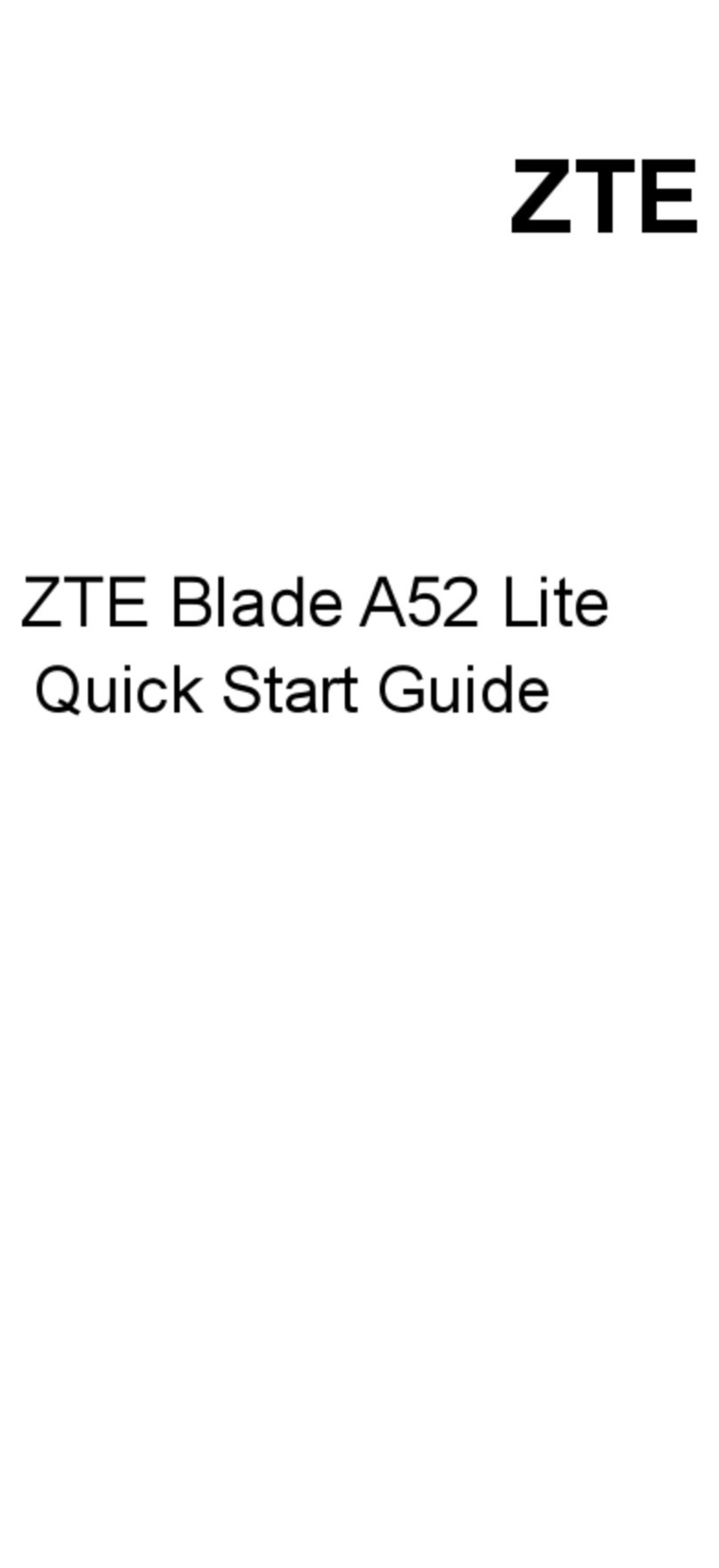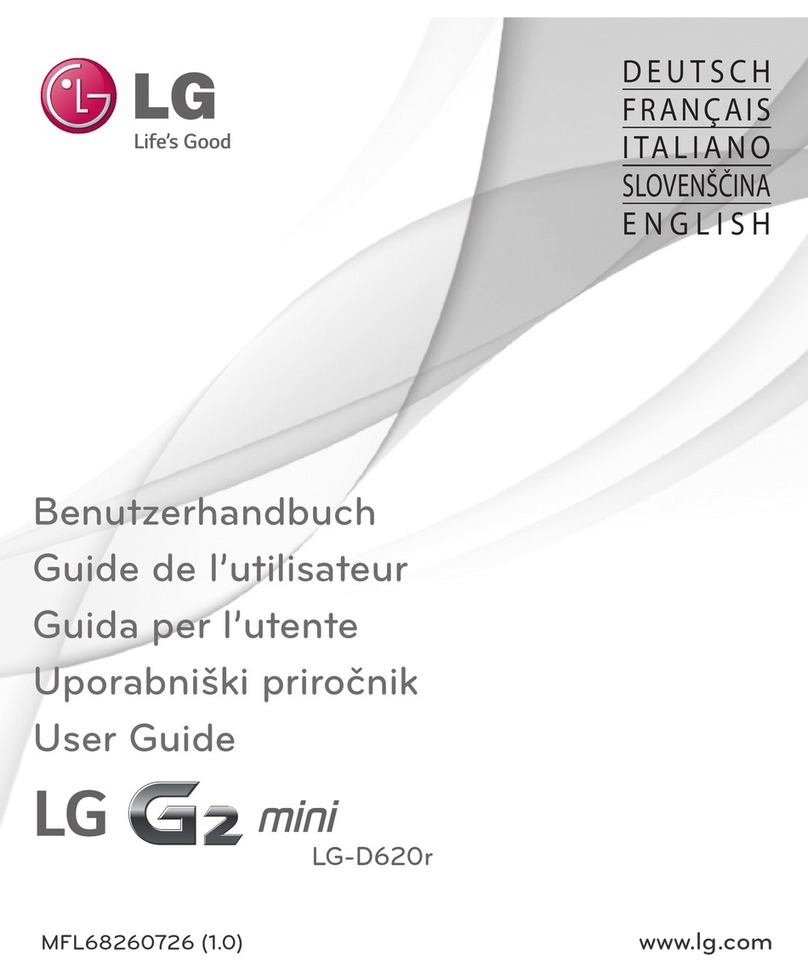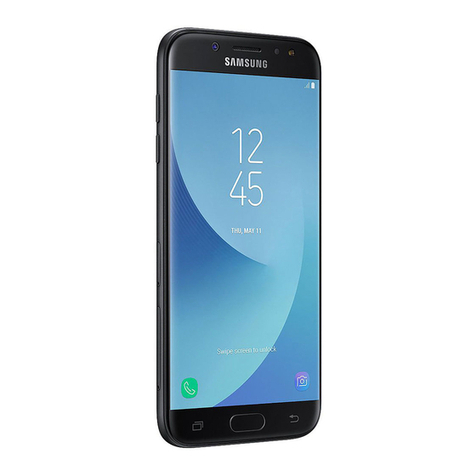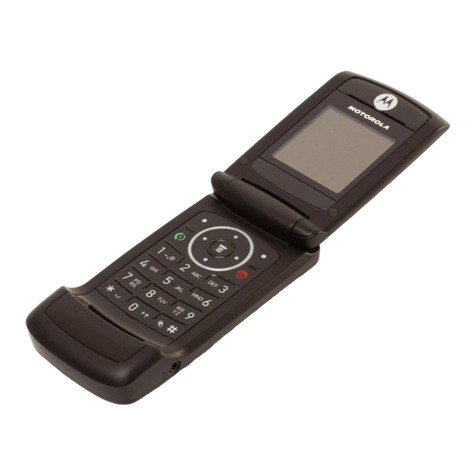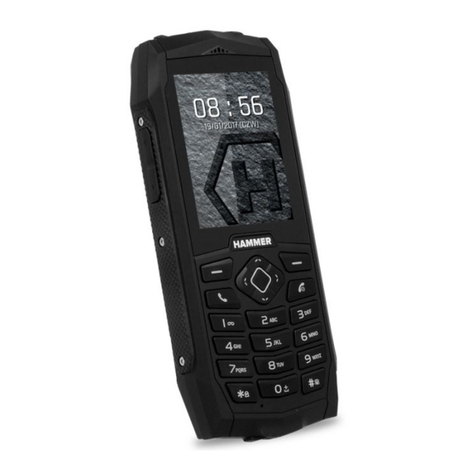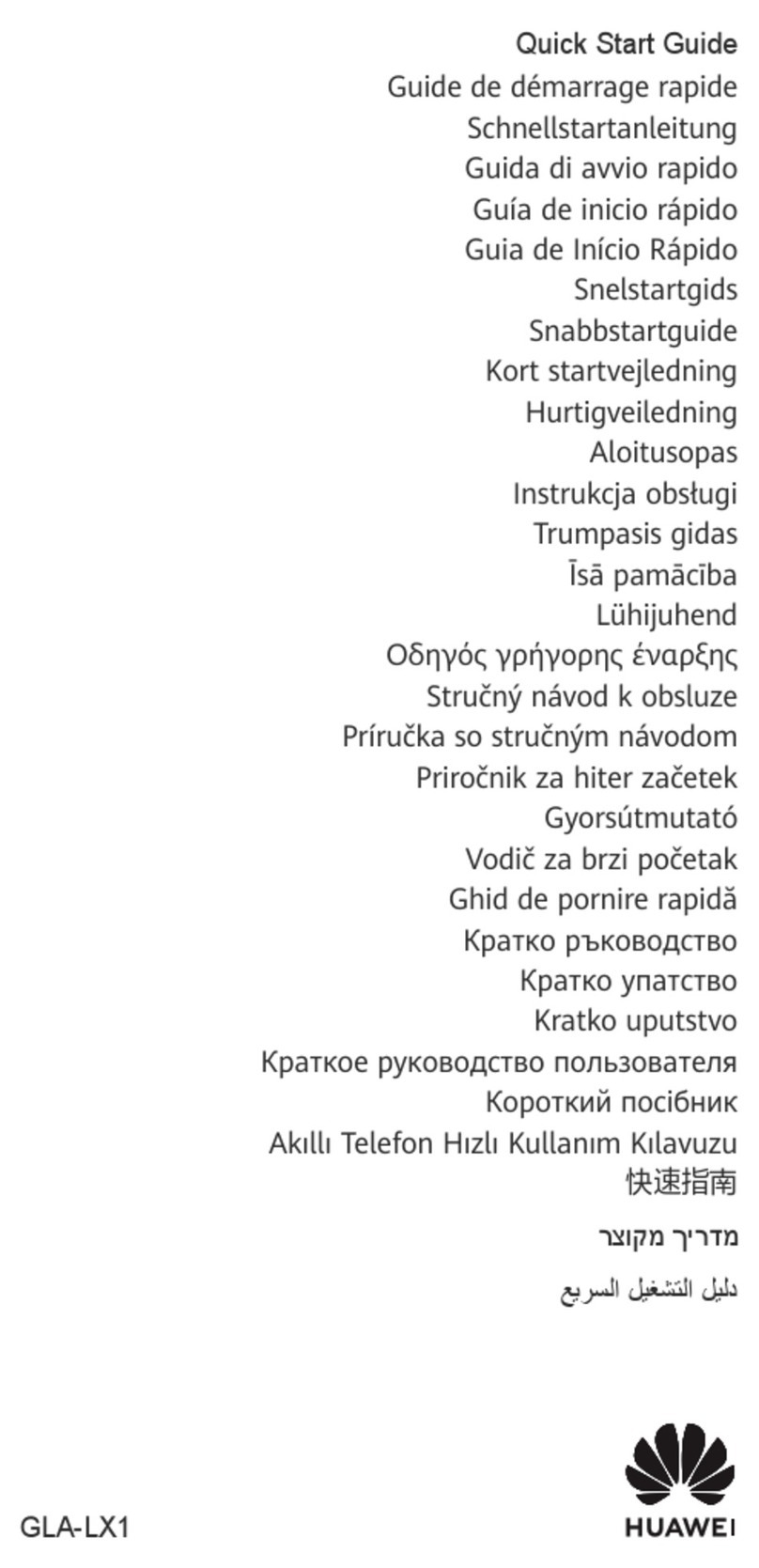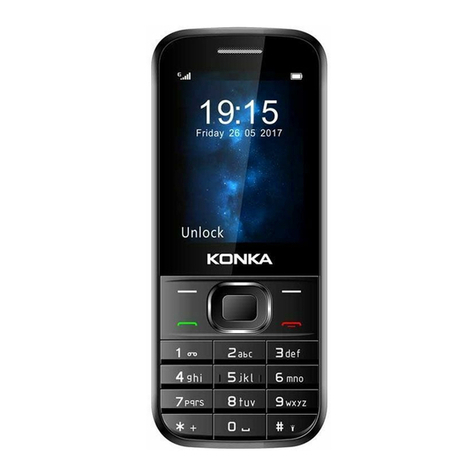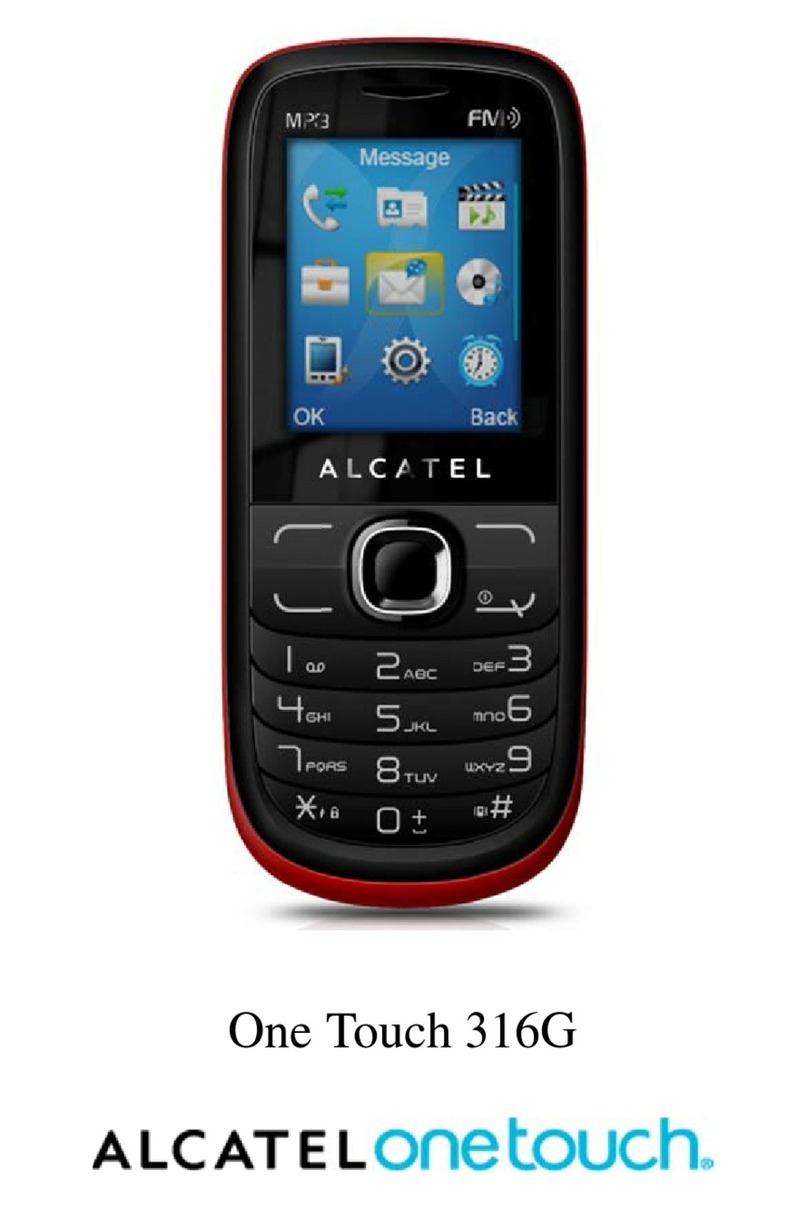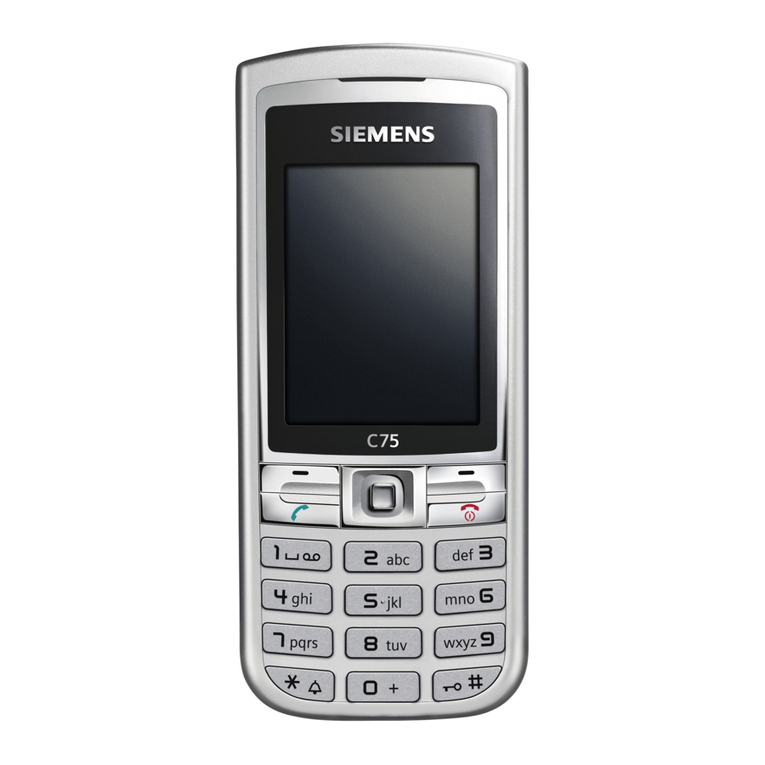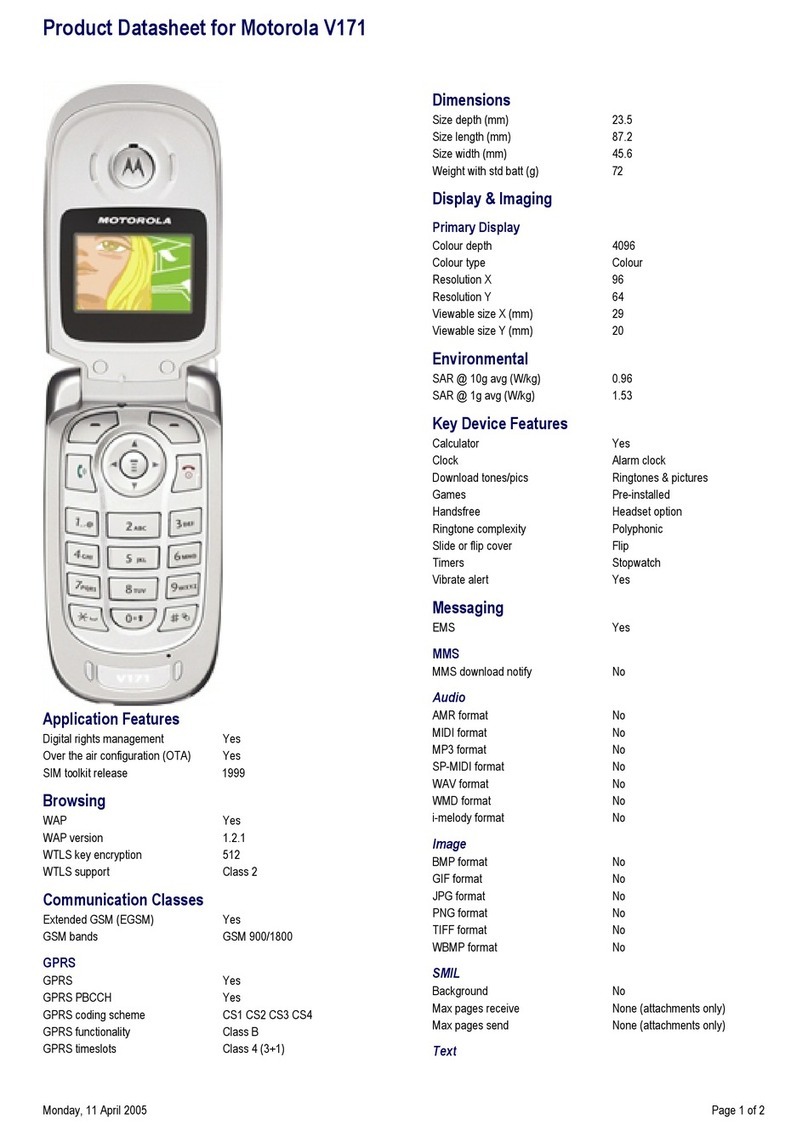Diamond Tech DT50-M User manual

D T 5 0 - M C O M M A N D R E F E R E N C E G U I D E 1 . 1 P a g e 1 | 38
DT50-M
AT Command Set
Reference Guide
V1.1

D T 5 0 - M C O M M A N D R E F E R E N C E G U I D E 1 . 1 P a g e 2 | 38
43 Broad Street
Unit C103
Hudson, MA 01749
USA
Tel: (866) 837-1931
Tel: (978) 461-1140
FAX: (978) 461-1146
http://www.diamondt.com/
Liability
Diamond Technologies Inc. shall not be liable for technical or editorial errors or omissions contained herein, nor for
incidental or consequential damages resulting from the use of this material. Those responsible for the use of this
device must ensure that all necessary steps have been taken to verify that the applications meet all performance
and safety requirements including any applicable laws, regulations, codes, and standards.
There are many applications of this product. The examples and illustrations in this document are included solely
for illustrative purposes. Because of the many variables and requirements associated with any particular
implementation, Diamond Technologies Inc. cannot assume responsibility for actual use based on these examples
and illustrations.
Diamond Technologies Inc., reserves the right to modify our products in line with our policy of continuous product
development. The information in this document is subject to change without notice and should not be considered
as a commitment by Diamond Technologies Inc.
Intellectual Property Rights
© 2020 Diamond Technologies Inc. * ALL RIGHTS RESERVED.* Protected to the fullest extent under U.S. and
international laws. Copying, or altering of this document is prohibited without express written consent from
Diamond Technologies Inc.
Diamond Technologies Inc. has intellectual property rights relating to technology embodied in the product
described in this document. These intellectual property rights may include patents and pending patent applications
in the US and other countries.
Diamond Technologies Inc. and the Diamond Technologies logo are trademarks of Diamond Technologies Inc. All
other trademarks are the property of their respective holders.

D T 5 0 - M C O M M A N D R E F E R E N C E G U I D E 1 . 1 P a g e 3 | 38
Revision History
Version
Date
Description
1.0
8/5/2020
Original Version
1.1
6/13/2022
Added Sections 7.1.12, 7.1.13, 7.1.14

D T 5 0 - M C O M M A N D R E F E R E N C E G U I D E 1 . 1 P a g e 4 | 38
Contents
Revision History.......................................................................................................................................3
1 Introduction .........................................................................................................................................7
2 Data Mode and AT Mode......................................................................................................................7
3 Default Serial Settings...........................................................................................................................7
4 AT Commands Over Bluetooth..............................................................................................................7
5 Syntax ..................................................................................................................................................8
5.1 Command Line Format..............................................................................................................8
5.2 Data Types..................................................................................................................................9
5.2.1 String ......................................................................................................................................9
5.2.2 Integer....................................................................................................................................9
5.2.3 Enumerator.............................................................................................................................9
5.2.4 Bd_Addr..................................................................................................................................9
5.2.5 Byte Array...............................................................................................................................9
6 AT Commands Reference.................................................................................................................... 10
6.1 General AT Commands...........................................................................................................10
6.1.1 Attention AT .........................................................................................................................10
6.1.2 Store current configuration &W ............................................................................................10
6.1.3 Set to default configuration Z................................................................................................10
6.1.4 Set to factory defined configuration +UFACTORY .................................................................. 11
6.1.5 Circuit 108/2 (DTR) behavior &D ........................................................................................... 11
6.1.6 DSR Override &S ...................................................................................................................11
6.1.7 Echo On/Off E .......................................................................................................................12
6.1.8 Escape character S2 .............................................................................................................. 12
6.1.9 Command line termination character S3 ...............................................................................13
6.1.10 Response formatting character S4.......................................................................................14
6.1.11 Backspace character S5 .......................................................................................................14
6.1.12 Module switch off +CPWROFF............................................................................................. 14
6.1.13 Module start mode +UMSM................................................................................................15
6.1.14 Local address +UMLA ..........................................................................................................15
6.1.15 System status +UMSTAT...................................................................................................... 16
6.1.16 RS232 Settings +UMRS ........................................................................................................16
7 Data Mode.................................................................................................................................... 17

D T 5 0 - M C O M M A N D R E F E R E N C E G U I D E 1 . 1 P a g e 5 | 38
7.1 Data Mode AT Commands......................................................................................................17
7.1.1 Enter data mode O................................................................................................................17
7.1.2 Connect peer +UDCP.............................................................................................................17
7.1.3 Close peer connection +UDCPC .............................................................................................19
7.1.4 Default remote peer +UDDRP................................................................................................19
7.1.5 Peer list +UDLP......................................................................................................................20
7.1.6 Server configuration +UDSC ..................................................................................................21
7.1.7 Server flags +UDSF ................................................................................................................23
7.1.8 Watchdog settings +UDWS....................................................................................................23
7.1.9 Configuration +UDCFG .......................................................................................................... 24
7.1.10 Peer connected +UUDPC.....................................................................................................25
7.1.11 Peer disconnected +UUDPD ................................................................................................26
7.1.12 Read data in AT command Mode +UDATR...........................................................................27
7.1.13 Write Data in AT Command Mode +UDATW........................................................................28
7.1.14 Data Available +UUDATA.....................................................................................................30
8 Bluetooth ...........................................................................................................................................30
8.1 Bluetooth Mode AT Commands..............................................................................................30
8.1.1 Discoverability mode +UBTDM.............................................................................................. 30
8.1.2 Connectability mode +UBTCM...............................................................................................31
8.1.3 Pairing mode +UBTPM .......................................................................................................... 31
8.1.4 Security mode +UBTSM.........................................................................................................31
8.1.5 Security type +UBTST ............................................................................................................ 33
8.1.6 User confirmation +UBTUC....................................................................................................33
8.1.7 Inquiry (BR/EDR) +UBTI .........................................................................................................34
8.1.8 Discovery (Low Energy) +UBTD..............................................................................................34
8.1.9 Bond +UBTB.......................................................................................................................... 35
8.1.10 Unbond +UBTUB .................................................................................................................35
8.1.11 Read bonded devices +UBTBD.............................................................................................36
8.1.12 Local name +UBTLN............................................................................................................. 36
8.1.13 Local COD +UBTLC............................................................................................................... 36
8.1.14 Master slave role +UBTMSR ................................................................................................37
8.1.15 Master slave role policy +UBTMSP ...................................................................................... 38

D T 5 0 - M C O M M A N D R E F E R E N C E G U I D E 1 . 1 P a g e 6 | 38

D T 5 0 - M C O M M A N D R E F E R E N C E G U I D E 1 . 1 P a g e 7 | 38
1 Introduction
2 Data Mode and AT Mode
The DT50 can be in two different modes AT mode and data mode. It starts in data mode and can be
requested to move to AT mode by sending an escape sequence. The default escape sequence consists of
three consecutive “/”( /// ). The escape sequence character can be changed using the ATS2 command.
In AT mode the DT50 will respond to AT programming commands.
Note: If the module is restored to factory default settings, the escape sequence will be reset to three
consecutive “+” (+++). To ensure compatibility across device revisions you will need to reconfigure the
DT50 using the following command sequence
ATS2=47
AT+UMSM=1
AT&W
AT+CPWROFF
The following criteria must be met for the DT50 to interpret the sequence as a valid escape sequence:
Before the escape sequence there must be silence for 1 second.
After the escape sequence there must be silence for 1 second.
The entire escape sequence must be sent within 200 ms.
To move from AT mode to data mode, use the "ATO1" command
3 Default Serial Settings
The DT50 does not support auto baud rate. The baud rate is set using the "Write RS232 Settings"
(AT+UMRS) command. The default RS232 settings are 115200 bits/s, 8 data bits, no parity, 1 stop bit,
and CTS/RTS flow control.
4 AT Commands Over Bluetooth
It is possible to configure and control a remote DT50 via Bluetooth using AT commands. Criteria for
using AT commands over Bluetooth:

D T 5 0 - M C O M M A N D R E F E R E N C E G U I D E 1 . 1 P a g e 8 | 38
A Bluetooth connection to the remote device (the device to configure) must exist. The Bluetooth
connection can e.g. be established using another DT50, a device with a PC-card/compact flash or a
device with embedded Bluetooth support. The remote DT50 must have turned on the support for
configuration over Bluetooth, for more information see the "Write Allow Configuration Over Bluetooth"
command. Once the connection has been established, the escape sequence must be sent over the
Bluetooth connection to the remote DT50 to move it into AT mode.
The same escape sequence rules apply to AT over Bluetooth as for AT over cable, for more information
see the section about Data Mode and AT Mode.
Note that the same escape sequence is used for cable and Bluetooth. Therefore, if you are using two
DT50s one of the DT50s must have its escape sequence changed using the ATS2 command. This is to
keep the first DT50 to enter AT mode instead of the remote DT50.
5 Syntax
5.1 Command Line Format
Each command line sent from the DTE to the DT50 is made up of a prefix, body and terminator. As prefix
for the DT50 AT commands, only "AT" (ASCII 065, 084) and "at" (ASCII 097, 116) can be used. There is no
distinction between upper and lower case characters. The body is a string of characters in the range
ASCII 032-255. Control characters other than <CR> (carriage return; ASCII 013) and <BS> (back space;
ASCII 008) in a command line are ignored. The terminator is <CR>. Commands denoted with a "+"
character are extended
AT commands, i.e. DT50 specific AT commands. Multiple commands in the same command line are not
supported. Each command has to be terminated by a <CR> before a new command can be sent. A
command must not be larger than 300 characters. A command can either be:
•Read commands without parameters: AT<command>?<CR>
•Write commands without parameters: AT<command><CR>
•Read and write commands with parameters: AT<command>=<parameter1>,
parameter2>,...<parameterN><CR>
Responses are sent back to the host and can be any of the following:
•Successful final message: <CR><LF>OK<CR><LF>
•Successful intermediate/final message with parameters follows an OK message in some
commands. In these cases the OK message works as a confirm message only.
<CR><LF><result_response>:<parameter1>, parameter2>, ...<parameterN>
•Error message:<CR><LF>ERROR<CR><LF>

D T 5 0 - M C O M M A N D R E F E R E N C E G U I D E 1 . 1 P a g e 9 | 38
5.2 Data Types
The definition of each command specifies the data types used for values associated with the command.
There are four data types:
•String
•Integer
•Enumerator
•Bluetooth Device Address
•Byte Array
5.2.1 String
A string shall consist of a sequence of displayable characters from the ISO 8859-1 (8-bit ASCII) character
set, except for characters "\" and """ and characters below 32 (space). A string constant shall be
delimited by two double-quote (""") characters, e.g. "Donald Duck". If the double-quote character (""")
is to be used within a string, e.g. "My friend "Bono" is a singer", they have to be represented as "\22". If
the back-slash character ("\") is to be used within a string constant, it has to be represented as "\5C". An
empty string is represented by two adjacent delimiters, "".
5.2.2 Integer
An integer value consists of a sequence of characters all in the range {0..9}. Numeric constants are
expressed in decimal format only.
5.2.3 Enumerator
An enumerator value is actually an integer, where all its possible values are specified in each case. Only
the defined values are accepted for the command in question.
5.2.4 Bd_Addr
This type is used to represent the Bluetooth Device Address. The type is composed of six fields, each
representing a hexadecimal value using two characters. For example, the Bluetooth Device Address
0x112233AABBCC is represented as 112233AABBCC or 112233aabbcc. Note that the Bluetooth Device
Address is not delimited with by two double-quote (""") characters.
5.2.5 Byte Array
This type is used to represent a byte array such as e.g. a UUID. For example, the AT*ADUUID configures
a 128 bits UUID as 00112233445566778899AABBCCDDEEFF

D T 5 0 - M C O M M A N D R E F E R E N C E G U I D E 1 . 1 P a g e 10 | 38
6 AT Commands Reference
6.1 General AT Commands
6.1.1 Attention AT
AT Command
Description
AT
Attention command determining the presence of the
DT50.
Response
Description
OK
Successful response.
ERROR
Error response.
6.1.2 Store current configuration &W
AT Command
Description
AT&W[<profile>]
Commits all the settings to be stored in start up
database. The parameters are
written to non-volatile memory when +CPWROFF is
issued.
Response
Description
OK
Successful response.
ERROR
Error response if <profile> is invalid.
Parameter
Description
Profile
0: Only valid value.
6.1.3 Set to default configuration Z
AT Command
Description
ATZ[<profile>]
Resets the profile to the last stored configuration.
Any settings committed with
AT&W will be discarded. The restored settings will be
used after a reboot.
Response
Description
OK
Successful response.
ERROR
Error response if <profile> is invalid.
Parameter
Description
Profile
0: Only valid value.

D T 5 0 - M C O M M A N D R E F E R E N C E G U I D E 1 . 1 P a g e 11 | 38
6.1.4 Set to factory defined configuration +UFACTORY
AT Command
Description
AT+UFACTORY
Reset to factory defined defaults. A reboot is
required before using the new settings.
Response
Description
OK
Successful response.
6.1.5 Circuit 108/2 (DTR) behavior &D
AT Command
Description
AT&D[<value>]
Controls the behavior of RS232 circuit 108/2 - Data
Terminal Ready (DTR) - on
changes between ASSERTED (logical 0 on UART_DSR
signal) and DEASSERTED
(logical 1 on UART_DSR signal) states.
The DTR line is connected to the DSR pin on the
module.
Response
Description
OK
Successful response.
ERROR
Error response if <value> is invalid.
Parameter
Description
value
0: DTR line is ignored.
1: (default and factory default value): Upon an
ASSERTED to DEASSERTED transition
of the DTR line, in data mode, the DCE enters the
command mode and issues an OK result code.
2: Upon an ASSERTED to DEASSERTED transition of
the DTR line, in data mode, the
DCE performs an orderly disconnect of all the radio
links and peer connections. No
new connections will be established while the DTR
line remains DEASSERTED.
6.1.6 DSR Override &S
AT Command
Description
AT&S[<value>]
Selects how the module will control RS232 circuit
107 - Data Set Ready (DSR) between ASSERTED
(logical 0 on signal UART_DTR) and DEASSERTED
(logical 1 on signal UART_DTR) states. The DSR line is
connected to the DTR pin on the module.

D T 5 0 - M C O M M A N D R E F E R E N C E G U I D E 1 . 1 P a g e 12 | 38
Response
Description
OK
Successful response.
ERROR
Error response if <value> is invalid.
Parameter
Description
value
0: ASSERT DSR
1(default and factory default value): ASSERT DSR line
in data mode and DEASSERT the DSR line in
command mode
2: ASSERT the DSR line when at least one remote
peer is connected and DEASSERT DSR line when no
remote peers are connected. See Connect Peer
+UDCP and Default remote peer +UDDRP for
definition of the remote peer. This applies to both
incoming and outgoing connections.
6.1.7 Echo On/Off E
AT Command
Description
ATE[<echo_on>]
This command configures whether or not the unit
echoes the characters received from the DTE in
Command Mode. If <echo_on> is omitted, it turns off
the echoing.
ATE?
Reads current echo setting.
Response
Description
echo_on
OK
Successful read response.
OK
Successful response.
ERROR
Error response if <profile> is invalid.
Parameter
Description
echo_on
0: Unit does not echo the characters in command
mode
1(factory default): Unit echoes the characters in
command mode.
6.1.8 Escape character S2
AT Command
Description
ATS2=<esc_char>
Configures the escape character used to switch the
unit from data mode to command mode.
ATS2?
Reads escape character.
Response
Description
esc_char
OK
Successful read response.

D T 5 0 - M C O M M A N D R E F E R E N C E G U I D E 1 . 1 P a g e 13 | 38
OK
Successful response.
ERROR
Error response.
Parameter
Description
esc_char
0...255
The escape sequence is the sequence that forces the
module to switch from the data mode to command
mode, or to enter configuration mode over the air.
To enter configuration mode over the air, this must
be enabled on the specific server or peer, and all
three escape characters must be transmitted in a
single frame.
Upon successful transition to the command mode,
the DCE will transmit an OK response.
Factory default: 43, the "+" character.
6.1.9 Command line termination character S3
AT Command
Description
ATS3=<line_term>
Writes command line termination character.
This setting changes the decimal value of the
character recognized by the DCE from the DTE to
terminate an incoming command line. It is also
generated by the DCE as part of the header, trailer,
and terminator for result codes and information text
along with the S4 parameter.
The previous value of S3 is used to determine the
command line termination character for entry of the
command line containing the S3 setting command.
However, the result code issued shall use the value
of S3 as set during the processing of the command
line. For example, if S3 was previously set to 13 and
the command line "ATS3=30" is issued, the
command line shall be terminated with a CR,
character (13), but the result code issued will use the
character with the ordinal value 30 instead of the CR.
ATS3?
Reads command line termination character.
Response
Description
line_term
OK
Successful read response.
OK
Successful response.
ERROR
Error response.
Parameter
Description
esc_char
0...127
Factory default: 13

D T 5 0 - M C O M M A N D R E F E R E N C E G U I D E 1 . 1 P a g e 14 | 38
6.1.10 Response formatting character S4
AT Command
Description
ATS4=<term>
Writes response formatting character.
This setting changes the decimal value of the
character generated by the DCE as part of the
header, trailer, and terminator for result codes and
information text, along with the S3 parameter.
If the value of S4 is changed in a command line, the
result code issued in response to that command line
will use the new value of S4.
ATS4?
Reads response formatting character.
Response
Description
term
OK
Successful read response.
OK
Successful response.
ERROR
Error response.
Parameter
Description
esc_char
0...127
Factory default: 10
6.1.11 Backspace character S5
AT Command
Description
ATS5=<backspace>
Writes backspace character.
This setting changes the decimal value of the
character recognized by the DCE as a request to
delete from the command line, the immediately
preceding character.
ATS5?
Reads backspace character.
Response
Description
<backspace>
OK
Successful read response.
OK
Successful response.
ERROR
Error response.
Parameter
Description
esc_char
0...127
Factory default: 8
6.1.12 Module switch off +CPWROFF
AT Command
Description

D T 5 0 - M C O M M A N D R E F E R E N C E G U I D E 1 . 1 P a g e 15 | 38
AT+CPWROFF
Reboot the DCE. During shutdown, the settings
marked for storing to start up the database by &W
are written in the non-volatile memory of the
module.
Response
Description
OK
Successful response.
6.1.13 Module start mode +UMSM
AT Command
Description
AT+UMSM=<start_mode>
Writes start mode
AT+UMSM?
Reads start mode
Response
Description
+UMSM:<start_mode>
OK
Successful read response.
OK
Successful write response.
ERROR
Error response.
Parameter
Description
start_mode
0 (factory default): Command mode
1: Data mode
2: Extended data mode.
3: PPP mode.
6.1.14 Local address +UMLA
AT Command
Description
AT+UMLA=<interface_id>
Reads the local address of the interface id.
AT+UMLA=<interface_id>,
<address>
Sets the local address of the interface id. A DCE
reboot is required before an address change takes
effect.
Response
Description
+UMLA:<address>
OK
Successful read response.
OK
Successful write response.
ERROR
Error response.
Parameter
Description
interface_id
1: Bluetooth
2: Wi-Fi
3: Ethernet
address
MAC address of the interface id. If the address is set
to 000000000000, the local address will be restored
to factory-programmed value.

D T 5 0 - M C O M M A N D R E F E R E N C E G U I D E 1 . 1 P a g e 16 | 38
The least significant bit of the first octet of the
<address> must be 0; that is, the <address> must be
a unicast address.
6.1.15 System status +UMSTAT
AT Command
Description
AT+UMSTAT[=<status_id>]
Reads current status of the system. If <status_id> is
omitted, all applicable ids will be listed.
Response
Description
+UMSTAT:<status_id>,<status_val>
OK
Successful read response.
ERROR
Error message.
Parameter
Description
status_id
0:<status_val>is the uptime in seconds. That is, the
seconds since last reboot
1:<status_val>is the current status of the settings
• 0:Not saved. That is, there are some changes since
the last stored command
• 1:Saved
address
MAC address of the interface id. If the address is set
to 000000000000, the local address will be restored
to factory-programmed value.
The least significant bit of the first octet of the
<address> must be 0; that is, the <address> must be
a unicast address.
6.1.16 RS232 Settings +UMRS
AT Command
Description
AT+UMRS?
Reads current RS232 settings from the module.
AT+UMRS[=<baud_rate>[,<flow_
control>[,<data_bits>[, <stop_
bits>[,<parity>[,<change_after_
confirm>]]]]]]
Applies new RS232 settings. If
<change_after_confirm> is 0, the new settings will
be applied after reset (if stored to the profile).
Response
Description
+UMRS:<baud_rate>, <flow_control>,
<data_bits>, <stop_bits>, <parity>
OK
Successful read response.
OK
Successful write response.
After receiving the OK response, the DTE shall wait
for at least 40 before issuing a new AT
command, to guarantee a proper baudrate
reconfiguration.
ERROR
Error message.

D T 5 0 - M C O M M A N D R E F E R E N C E G U I D E 1 . 1 P a g e 17 | 38
Parameter
Description
baud_rate
Factory default value: 115200
19200 - 5250000. The module will set a baud rate as
close as possible to the requested baud rate.
Recommended baud rates: 9600, 14400, 19200,
28800, 38400, 57600, 76800, 115200, 230400,
250000, 460800, 921600, 3000000.
flow_control
1 (factory default): CTS/RTS used for flow control
2: CTS/RTS not used.
data_bits
Factory-programmed value:8
stop_bits
1 (factory default): 1 stop bit
2: 2 stop bits.
parity
1 (factory default): no parity
2: odd parity.
3: even parity.
change_after_confirm
0: Do not change; it must be stored and reset before
applying the new setting
1 (default): Change after OK. The DTE should wait at
least 40 ms before sending a new command. When
operating in the extended data mode, the
change_after_confirm has no
direct effect. Settings must be stored to the profile
and the module must be rebooted before applying
the settings.
7 Data Mode
7.1 Data Mode AT Commands
7.1.1 Enter data mode O
AT Command
Description
ATO[<mode>]
Requests the module to move to the new mode.
Response
Description
OK
Successful response.
ERROR
Error response.
Parameter
Description
mode
0: Command mode
1: Data mode (default)
2: Extended data mode (EDM):
3: PPP mode
7.1.2 Connect peer +UDCP
AT Command
Description

D T 5 0 - M C O M M A N D R E F E R E N C E G U I D E 1 . 1 P a g e 18 | 38
AT+UDCP=<url>
Connects to an enabled service on a remote device.
When the host connects to a service on a remote
device, it implicitly registers to receive the
"Connection Closed" event.
Response
Description
+UDCP:<peer_handle>
OK
Successful response.
ERROR
Error response.
Parameter
Description
url
URL to the service on the remote peer.
<scheme>://<domain>[:<port>]/[?<query_string>]
Supported schemes:
sps:
• <domain> specifies Bluetooth address <Bd_Addr>
of the remote device; port is ignored.
• <query_string> can define "bt_name", "role" and
"escseq"
o "bt_name" defines the Bluetooth name to which
the device shall connect
o "role" defines the role of the remote device; if the
local device is configured as Bluetooth low energy
Simultaneous Peripheral or Central.
o "escseq" defines allowed "escseq"; if the "escseq"
is 1, the remote device can put the local device in AT
command mode (see AT+UDSF command).
spp/dun:
• <domain> specifies Bluetooth address <Bd_Addr>
of the remote device and port specifies RFCOMM
channel
• <query_string> can define "bt_name", "uuid",
"qos" and "escseq"
o "bt_name" defines the Bluetooth name to which
the device shall connect in spp
o "uuid" defines the uuid of the remote service
o "qos=1" enables Bluetooth Quality of service (see
AT+UBTCFG command).
o "escseq=1" enables escape sequence detection
(see AT+UDSF command).
tcp:
• <domain> specifies either IPv4 <IPv4_Addr> or IPv6
<IPv6_Addr> address or domain name.
• <query_string> can define "local_port"
• <query_string> "flush_tx" defines if a flush should
be done after each write
o 0(default): disabled

D T 5 0 - M C O M M A N D R E F E R E N C E G U I D E 1 . 1 P a g e 19 | 38
o 1: enabled
• <query_string> "keepAlive" is used to configure the
tcp keepalive settings. It includes keepIdle,
keepInterval, and keepCount separated by a "+"
o keepIdle: time in milliseconds (ms) between
keepalive packets
o keepInterval: time in milliseconds between two
successive keepalive retransmissions
o keepCount: the number of retransmissions to be
sent before disconnecting the remote end
• <query_string> "ca" defines the certificate
authority
• <query_string> "cert" defines the client certificate
• <query_string> "privKey" defines the private key
udp:
• <domain> specifies either IPv4 <IPv4_Addr> or IPv6
<IPv6_Addr> address or domain name
• <query_string> can define "local_port"
• <query_string> "flags=1" enables reception from a
unicast address when peer is configured to a
multicast address.
mqtt: Establishes a TCP or TLS connection to an
MQTT Broker.
peer_handle
The peer handle identifies the connection and is
used when closing the connection.
7.1.3 Close peer connection +UDCPC
AT Command
Description
AT+UDCPC=<peer_handle>
Closes an existing peer connection.
Response
Description
OK
Successful response.
ERROR
Error response.
Parameter
Description
peer_handle
The peer handle identifies the connection.
7.1.4 Default remote peer +UDDRP
AT Command
Description
AT+UDDRP[=<peer_id>]
This command reads the default remote peer (peer
id).
AT+UDDRP=<peer_id>,<url>,
<connect_scheme>
This command writes the default remote peer (peer
id).

D T 5 0 - M C O M M A N D R E F E R E N C E G U I D E 1 . 1 P a g e 20 | 38
Response
Description
+UDDRP:<peer_id>,<url>,
<connect_scheme>
Successful read response.
OK
Successful write response.
ERROR
Error response.
Parameter
Description
peer_id
The peer ID can be 0-6.
url
URL to the service on the remote peer. See Connect
Peer +UDCP for more details and examples of valid
URLs. Writing an empty url "" will reset the
connect_scheme.
connect_scheme
This parameter is a bit field. At least one bit needs to
be set. Bit 0 is the least significant bit. Each bit is
defined as shown below:
• Bit 0: Reserved. Do not use.
• Bit 1: Always connected - Keep the peer connected
when not in command mode.
That is, on errors and remote disconnect, the peer
will automatically try to reconnect. The reconnect
timeout interval can optionally be selected by setting
the parameter "ac-to" to the query string; Example:
"spp://0012f3000001/?ac-to=10000,2"
• Bit 2: External connect - Trigger connection to peer
on external signal connect event. The connect event
is generated when the signal SWITCH_0 is kept low
for at least 200 ms but not more than 1000 ms while
the device is in the data mode.
7.1.5 Peer list +UDLP
AT Command
Description
AT+UDLP?
This command reads the connected peers (peer
handle).
Response
Description
+UDLP:<peer_handle>,<protocol>,
<local_address>,<remote_address>
OK
Successful read response.
ERROR
Error response.
Parameter
Description
peer_handle
The peer handle identifies the connection.
protocol
Protocol of the connection.
local_address
Local address.
Table of contents
